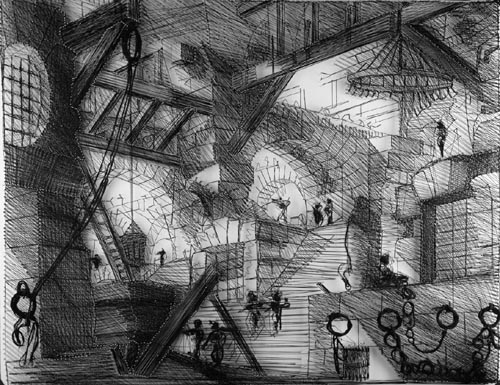
Muniz works are suggestions belonging to the language of visual culture. His clever use of material not otherwise proper to design becomes the object of his conventional photographic prints. He applies both humour and criticism as if to defy our capacity to discern fact from fiction, reality from appearance. With his use of unorthodox and unusual materials in photography, such as chocolate, soil, thread, and gelatine, the artist first creates an image by manipulating the material, then he takes shot. Thus, we have icons from everyday life such as sport and film stars, and news events being represented by chocolate syrup. Muniz photography is thus able to synthesize the numerous elements of the portrayed subject. Taking pictures is to document, but also to idealize; and Muniz images tend to represent precisely this: the mental vision created when a person first sets his eyes on a photograph. The series of aerial photographs of objects drawn into the soil call the mind photographic negatives. The land surface which becomes the background is lit up, while the mark left by the excavator the picture is the dark shadow. The result of all this is anyway a photographic print. The spectator, however, is invited to reflect on what the objects present, as though in an exchange, rather than the predominance of one form on another. The objects represented in these works are taken from human, day-to-day and contemporary life, even though they call to mind the abstract and ancestral forms of the Nazca lines from Peru, or the abstract signs of the Earth Art of the '60s e '70s (eg. the famous Spiral Jetty by Robert Smithson.) The works shown at the last edition of the Venice Biennale
were inspired by historical facts belonging to the collective
imagination, such as the big New York Stock Exchange collapse
in 1929, man landing on the moon, the fall of the Berlin Wall,
and the discovery of America. They are, for the man of today,
fundamental and "familiar" historical events, In this exhibition, the artist is proposing for the first
time a new series of works. Once again, the theme is based on
images from western culture, with particular reference to Giovan
Battista Piranesi and his etchings. This "Venetian architect,"
as he used to call himself when he first began, was rather a
famous etcher and a painter of views of the 16th century. He
worked mainly in Rome, but he had contacts with Tiepolo's studio
and other painter of views such as
Full-colour catalogue available. |